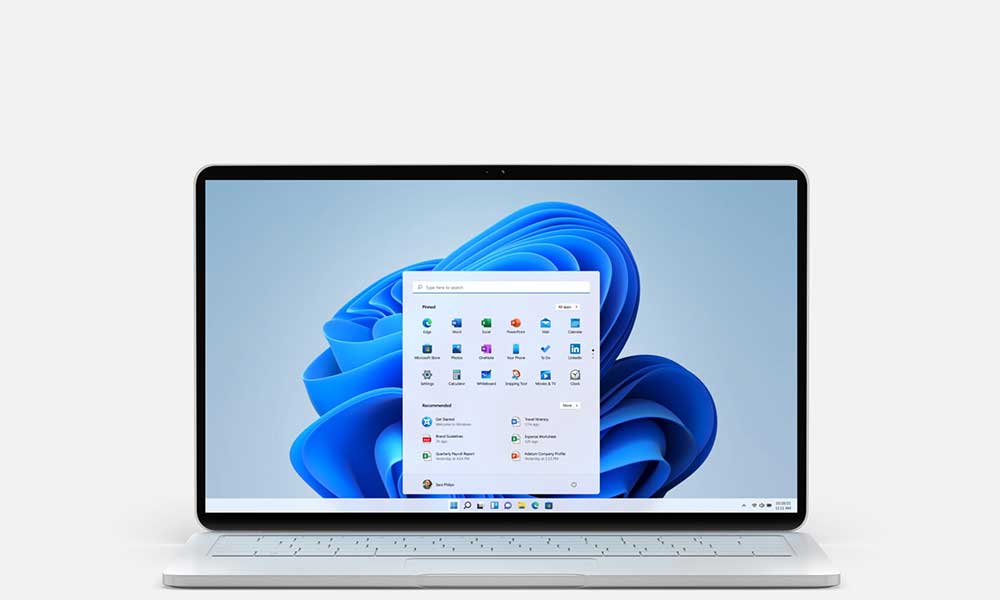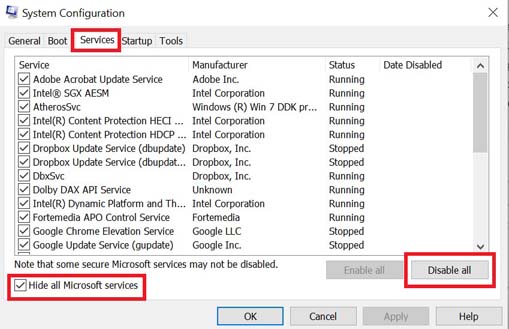Though Microsoft has entered a new Windows OS generation called ‘Windows 11’ after so many years since releasing Windows 10, it seems that users are experiencing a lot of issues while or after upgrading from Win10 to Win11. Meanwhile, plenty of unfortunate users are having issues with Windows 11 updates because multiple reports are mentioning the Windows 11 Update Error Code: 0x800703ee which becomes quite common right now.
Now, if you’re also facing the same issue while installing the feature or cumulative update on your Windows 11, that means it’s related to Windows update installation failure. Because some reports are saying that the particular error message looks like “Installation Failure: Windows failed to install the following update with error 0x800703EE”. The chances are high that a corrupted Windows update component may be occurring the error.
Also Read
How to Fix If Alt+Tab Shortcut Not Working on Windows 11
Fix: Windows 11 Context Menu Is Slow, Missing Item, and Not Working
TranslucentTB Windows 11 Not Working, How to Fix?
Fix: Windows 11 Multi Display Not Working
Download Superlite Version of Windows 11 Ghost Spectre
Fix: Windows 11 Disk Management Not Loading or Showing Up
Fix: Mouse Scroll Wheel Jumps Up and Down on Windows 10, 11
Fix: Windows 11 Won’t Wake Up From Sleep With Keyboard or Mouse

Page Contents
- How to Fix Windows 11 Update Error Code: 0x800703ee
- 1. Reboot your PC
- 2. Check your Internet Connection
- 3. Use Windows Update Troubleshooter
- 4. Update Device Drivers
- 5. Stop and Relaunch Windows Update Service
- 6. Uninstall the Recently Installed Windows Updates
- 7. Run SFC Tool
- 8. Run DISM Tool
- 9. Perform a Clean Boot
- 10. Disable Third-Party Programs
- 11. Reset Windows Update Components
- 12. Perform a System Restore
How to Fix Windows 11 Update Error Code: 0x800703ee
Sometimes security application interruption or buggy patch updates or even any third-party program causes such an issue that most of us might not gonna notice quickly. Mostly whenever Windows 11 users are trying to upgrade their system to a new version or build, it can be frustrating a lot. Luckily, here we’ve shared a couple of possible workarounds for you that should gonna help you out. So, without wasting any more time, let’s jump into it.
1. Reboot your PC
Sometimes issues with the system cache or temporary glitches may cause Windows update-related errors. Make sure to restart the computer to check whether the problem has been fixed. Just click on the Start menu button, the power icon, and select Restart.
2. Check your Internet Connection
It’s also worth recommending checking out the internet connection properly before going to any other conclusion because a poor or unstable network can trigger such issues a lot. If in case, you’re using a wired (ethernet) connection, then you can switch to Wi-Fi or vice versa to ensure there is no issue with the specific networking connectivity. If the internet is working fine, then you can head over to the next one.
3. Use Windows Update Troubleshooter
The chances are high that somehow your Windows update process is getting stuck at some point due to unexpected reasons which will obviously trouble you at any cost. So, make sure to run the Windows Update Troubleshooter process on your computer by following the steps below to cross-check whether the problem is still bothering you or not. To do so:
- Press the Win+I keys to open Windows Settings.
- Click on Troubleshoot > Click on Other troubleshooters.
- Now, you’ll see Windows Update in the list.
- Just click on Run and wait for the troubleshooting to be completed.
If there is an issue with the Windows Update, it’ll obviously notify you. If there is no possible issue found, you can follow the next method.
4. Update Device Drivers
It’s always required to update necessary device drivers on your Windows system to run all the programs smoothly. To do this:
- Right-click on the Start Menu to open up the Quick Access Menu.
- Click on Device Manager from the list.
- Now, double-click on the respective category to expand the list whatever you want to update.
- Then right-click on the specific device/driver.
- Select Update driver > Choose Search automatically for drivers.
- If there is an update available, it’ll automatically download and install the latest version.
- Once done, make sure to reboot your computer to change the effects.
Also Read
5. Stop and Relaunch Windows Update Service
Sometimes it may also be possible that your Windows Update Service is running in the background while trying to update & install the latest update. It may trigger updating issues and users might not gonna understand it. So, make sure to stop the service and delete some specific files then relaunch it to check for the issue. To do that:
- Click on the Start menu > Type services.msc to search for it.
- Click on Services > Locate the Windows Update service.
- Right-click on it and click on Stop > Now, open File Explorer.
- Go to the C: drive (or the system drive) > Open the Windows folder.
- Search for the SoftwareDistribution folder and open it.
- Next, delete all the files inside this particular folder.
- Once done, go back to Services, and Enable the Windows Update service by right-clicking on it.
6. Uninstall the Recently Installed Windows Updates
Some users did report previously that after installing the latest update, their system starts behaving weirdly or they have started noticing some issues with programs. So, the same can happen with Windows updates. You should try uninstalling the recently installed Windows update on your PC.
- Press the Win+I keys to open Windows Settings.
- Click on Windows Update > Click on Update History.
- Go to Uninstall Updates > A new window will open where you can see recently installed updates.
- If you know or feel that the last update has done the issue then you can click on the particular update.
- Select Uninstall and follow the on-screen instructions to complete the removal process.
- Finally, reboot the PC to apply changes.
7. Run SFC Tool
SFC or System File Checker tool is useful enough to find out whether any program file or a disk drive has some issues or not on a Windows system. If there is an issue, you can try manually fixing it by following the steps below. To do this:
- Click on the Start Menu and type cmd.
- Now, right-click on Command Prompt from the search result.
- Select Run as administrator > If prompted, click on Yes to give admin privileges.
- Once the command prompt window opens, type the following command and hit Enter to execute it: [There is a space before /]
sfc /scannow

- Now, wait for the process to complete. Depending on the disk size and problematic data, it may take some time.
- Once done, you can note down the detected issues to search for solutions. Make sure to restart your computer to change effects immediately.
8. Run DISM Tool
Try using the Deployment Image Servicing and Management (DISM) command on your Windows PC to fix several issues with corrupted or missing files. DISM is a command-line tool that can be used to mount and service Windows images before deployment. To do so:
- Click on the Start Menu and type cmd.
- Now, right-click on Command Prompt from the search result.
- Select Run as administrator > If prompted, click on Yes to give admin privileges.
- Once the command prompt window opens, type the following command and hit Enter to execute it:
DISM.exe /Online /Cleanup-image /Scanhealth
- Then type the following command and hit Enter:
DISM.exe /Online /Cleanup-Image /CheckHealth
- Then type the following command and press Enter:
DISM.exe /Online /Cleanup-Image /RestoreHealth
- Now, wait for the process to complete and exit the command prompt.
- Finally, restart your computer to apply changes.
9. Perform a Clean Boot
Some of the apps and their services may start automatically while booting the system right away. In that case, those apps or services will definitely gonna use a lot of internet connection as well as system resources. If you’re also feeling the same, make sure to perform a clean boot on your computer to check for the issue. To do that:
- Press Windows + R keys to open the Run dialog box.
- Now, type msconfig and hit Enter to open System Configuration.
- Go to the Services tab > Enable the Hide all Microsoft services checkbox.

- Click on Disable all > Click on Apply and then OK to save changes.
- Now, go to the Startup tab > Click on Open Task Manager.
- The Task Manager interface will open. Here go to the Startup tab.
- Then click on the particular task which has a higher startup impact.
- Once selected, click on Disable to turn them off from the startup process.
- Do the same steps for each program that has a higher startup impact.
- Once done, make sure to restart your computer to apply changes.
10. Disable Third-Party Programs
Unnecessary background running tasks or programs can eat up a lot of system resources like CPU or Memory usage literally reducing system performance. Hence, Windows Update-related issues appear quite often. Simply, close all the unnecessary background running tasks completely. To do this:
- Press Ctrl + Shift + Esc keys to open up the Task Manager.
- Now, click on the Processes tab > Click to select tasks that are unnecessarily running in the background and consuming enough system resources.
- Click on End Task to close it one by one.
- Once done, restart your system.
11. Reset Windows Update Components
By resetting the Windows Update Components, you may be able to fix some issues or conflicts with the Windows system on your PC. To do that:
- Click on the Start menu > Type cmd.
- Now, right-click on Command Prompt from the search result.
- Select Run as administrator > If prompted by UAC, click on Yes to proceed.
- Once the Command Prompt window opens, you can copy & paste the following commands and hit Enter to run them:
net stop wuauserv net stop cryptSvc net stop bits net stop msiserver
- Next, you’ll need to run the command below to rename the folder:
ren C:\Windows\SoftwareDistribution SoftwareDistribution.old
- Then run the following command to rename another folder:
ren C:\Windows\System32\catroot2 Catroot2.old
- Finally, restart the services again that you’ve disabled earlier by running the commands below:
net start wuauserv net start cryptSvc net start bits net start msiserver
- Once done, reboot the PC to change the effects.
12. Perform a System Restore
If none of the methods worked for you then make sure to perform a system restore on your PC to go back to a working and stable system backup.
- Click on the Start Menu and type restore.
- Click on Create a restore point from the search result.
- Now, click on System Restore > Either you can go for Recommended restore or Choose a different restore point.
- If you select Recommended restore that means whatever restore point you’ve created last time, it’ll be automatically processed by the system.
- If you select Choose a different restore point then you can manually select a specific restore point out of the multiple saved restore points. You can also select a restore point that you’ve saved to another drive.
- Once selected, click on Next > Follow the on-screen instructions to complete the restoration process.
That’s it, guys. We assume this guide was helpful to you. For further queries, you can comment below.
